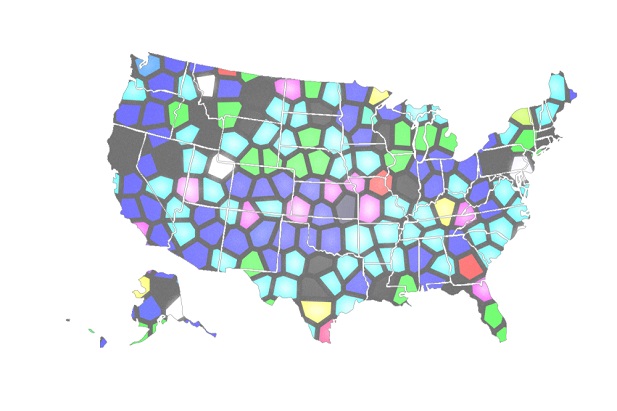 The study finds there are brightspots within under-served demographic groups when it comes toincome inequality, retirement insecurity and household debt.However, some groups have suffered disproportionately in the wakeof the Great Recession. (Photo: Shutterstock)
The study finds there are brightspots within under-served demographic groups when it comes toincome inequality, retirement insecurity and household debt.However, some groups have suffered disproportionately in the wakeof the Great Recession. (Photo: Shutterstock)
When it comes to finances, socioeconomic factors take a toll onparticular groups within the U.S. population .
|According to Prudential Financial's financial wellness census“The Cut – Exploring Financial Wellness WithinDiverse Populations,” there are bright spots withinunder-served demographic groups when it comes to income inequality,retirement insecurity and household debt.
|However, some groups have suffered disproportionately in thewake of the Great Recession.
|Unique challenges
The study looks at the unique challenges facing Asian Americans,blacks, Latinos, caregivers, women and the LGBTQcommunity. It finds, among many things, the following:
- Black Americans, Asian Americans and Latino Americans are farmore likely than the general population to be providing financialsupport to extended family members.
- More than half of women are the primary breadwinners in theirhouseholds, as well as taking on more nonfinancial responsibilitiesthan men.
- Caregivers (many of whom are women) are also not just providingcare, but “still working outside the home at levels that almostmatch those who are not caregivers.”
- Both men and women in the LGBTQ community tend to earn lessthan the general population.
Asian Americans
Within the Asian community, foreign-born Asians are more likelythan the general population to be taking advantage of a workplaceretirement plan, while U.S.-born Asians are less likely.
|The former are more likely to be employed full-time, while thelatter are more often small business owners or independent workers.And foreign-born Asians are more likely to expect their retirementplans to yield income in retirement.
|Black Americans
Black Americans have lower levels of emergency and retirementsavings, with 57 percent of black households surveyed having noretirement savings, compared with 44 percent of the generalpopulation.
|Among those that do have retirement savings, the average totalis $23,000 for black households, compared with $154,000 for generalpopulation households.
|The report finds that only about 45 percent of higher-incomeblack households, and just 20 percent of lower-income blackhouseholds, have accounts in an employer-sponsored definedcontribution savings plan.
|Caregivers
Caregivers are primarily still working, with fewer than aquarter being retired. And 38 percent say it's likely to stay thatway, since they won't be able to retire, compared with 25 percentof the general population.
|It's not that they don't have savings or retirement accounts,but that they've put the money to other uses; they're more likelyto have outstanding loans, from 401(k)s to banks, family members,payday loans, home equity loans and other sources.
|Caregivers with special needs children are more likely to havetaken a loan or hardship withdrawal from a DC plan.
|Latinos
Latinos are more focused on helping family membersfinancially.
|Members of the general population are nearly twice as likely asforeign-born Latinos (40 percent, compared with 21 percent) toparticipate in an employer-sponsored retirement savings plan suchas a 401(k), and a little more likely than U.S.-born Latinos (32percent).
|But it could have more to do with lack of money than lack ofaccess; nearly identical percentages of Latino Americans and thegeneral population (22 percent and 20 percent, respectively)chalked up lack of retirement plan participation to having too manycurrent expenses.
|And 41 percent of both groups said their employer provided aretirement plan that matched employee contributions. While 10percent of the general population said they “hadn't gotten around”to participating, not that many more Latinos—16 percent—said thesame.
|LGBTQ Americans
LGBTQ respondents own fewer financial products, includingretirement accounts, and they're saving less than the generalpopulation.
|Just 27 percent of LGBTQ respondents have an employer-sponsoredretirement savings account such as a 401(k), compared with 41percent of non-LGBTQ respondents.
|And only 21 percent have an individual retirement account,versus 32 percent of non-LGBTQ respondents.
|In addition, a surprising 62 percent of LGBTQrespondents said they are not currently saving for retirement inany way, compared with just 49 percent of non-LGBTQrespondents.
|As a result, 55 percent of LGBTQ respondents had saved nothingfor retirement, compared with 42 percent of non-LGBTQrespondents—although when they do save, they manage to put awaynearly as much as the general population, at $126,000, on average,versus $158,000.
|Women
Women make less, and save less for retirement for a myriad ofreasons.
|The study reveals that just 54 percent of women respondents havesaved for retirement, at an average of $115,412. That compares with61 percent of men who have saved for retirement, at an average of$202,859.
Complete your profile to continue reading and get FREE access to BenefitsPRO, part of your ALM digital membership.
Your access to unlimited BenefitsPRO content isn’t changing.
Once you are an ALM digital member, you’ll receive:
- Critical BenefitsPRO information including cutting edge post-reform success strategies, access to educational webcasts and videos, resources from industry leaders, and informative Newsletters.
- Exclusive discounts on ALM, BenefitsPRO magazine and BenefitsPRO.com events
- Access to other award-winning ALM websites including ThinkAdvisor.com and Law.com
Already have an account? Sign In
© 2024 ALM Global, LLC, All Rights Reserved. Request academic re-use from www.copyright.com. All other uses, submit a request to [email protected]. For more information visit Asset & Logo Licensing.








